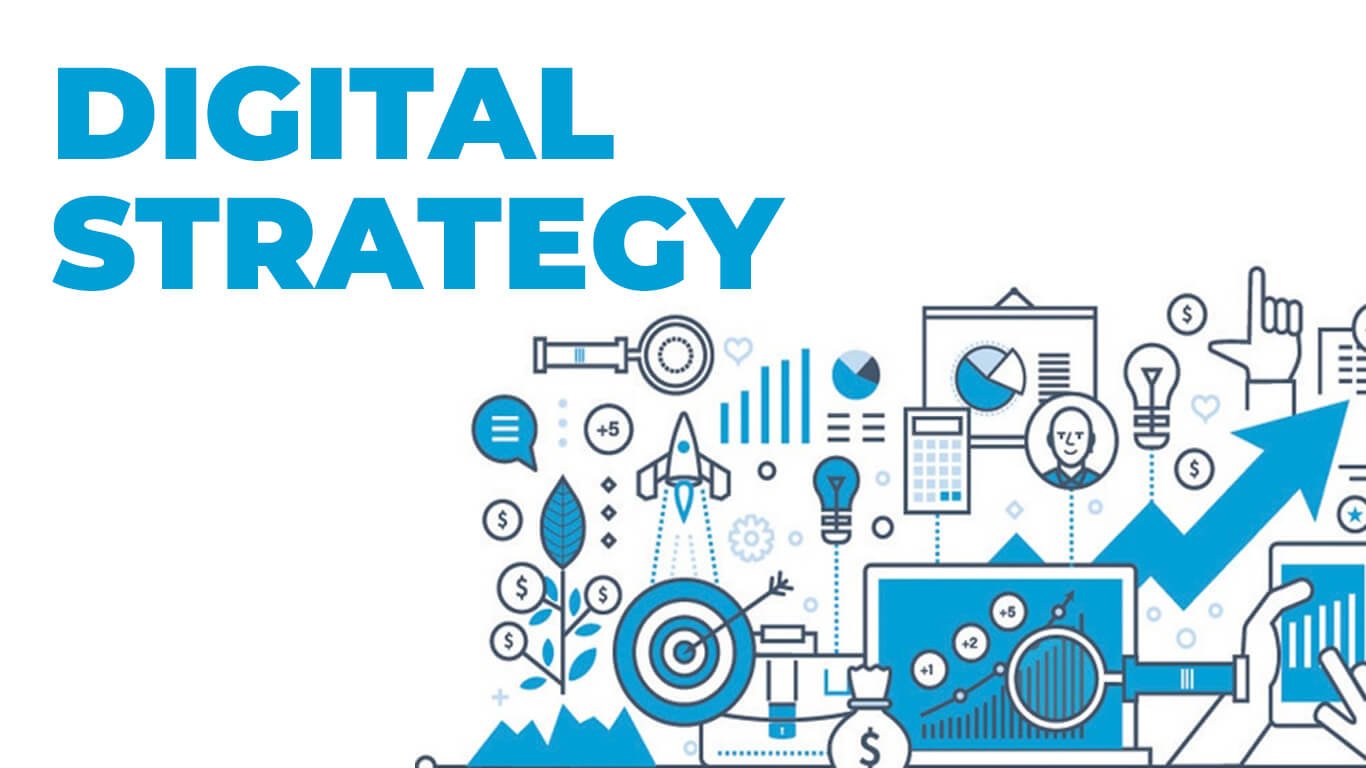In the ever-evolving digital landscape, organizations face pivotal decisions in shaping their digital journey. Two primary approaches, Digital Strategy vs Digital Transformation, play central roles in this evolution. In this exploration, we delve into these approaches, understanding their definitions, scopes, and objectives. We also uncover key differences between them, such as their goals, timeframes, and scopes. We highlight the potential synergy when both approaches are combined. Additionally, we address challenges and provide steps for organizations to choose the right approach, considering factors like objectives and resources.
Table of Contents
- Understanding Digital Strategy
- Exploring Digital Transformation
- Digital Strategy vs Digital Transformation: Key Differences
- Synergy between Digital Strategy vs Digital Transformation
- Challenges and Pitfalls for Both Digital Strategy vs Digital Transformation
- Digital Strategy vs Digital Transformation: Selecting the Right Approach for Your Organization
Understanding Digital Strategy
Definition and Scope
Digital strategy, at its core, represents the harnessing of digital technologies to revolutionize and enhance various aspects of business models and operations. It encompasses a wide range of activities aimed at leveraging technology for competitive advantage, be it through the development of novel products, the reimagining of existing processes, or the creation of unique business capabilities.

This strategy delineates the path an organization intends to tread in order to gain a distinct edge in the market by effectively employing technology. Furthermore, it encompasses the tactical maneuvers and transformations required to bring about these changes, often involving shifts in business models to enable innovative services that were previously unattainable. In essence, digital strategy forms the blueprint for a company’s digital transformation journey, helping it adapt to the evolving landscape of the modern business world.
Objectives of Digital Strategy
The primary objectives of digital strategy are multifaceted and aimed at propelling an organization toward success in the digital age. Firstly, digital strategy strives to enhance business performance by utilizing technology to optimize processes, reduce operational costs, and improve overall efficiency. Additionally, it seeks to foster innovation by facilitating the development of new digital products and services that cater to evolving consumer demands and market trends.
Another key objective is to secure a competitive advantage by leveraging technology to differentiate the company from its peers. Digital strategy also focuses on enhancing customer experiences through personalized, data-driven approaches. Ultimately, the overarching goal is to position the organization to thrive in a future where digital technologies are central to nearly all aspects of business, ensuring its relevance and sustainability in the rapidly evolving marketplace.
Components of an Effective Digital Strategy
An effective digital strategy comprises these 4 key components, allowing organizations to navigate the digital landscape strategically, connect with their audience, and achieve their business goals in an increasingly digital-centric world.
- Market Analysis: Market analysis is a foundational component of an effective digital strategy. It involves a comprehensive assessment of the business environment in which an organization operates. This includes studying industry trends, competitors, market size, and emerging opportunities. By understanding the market dynamics, an organization can identify gaps and areas where digital technology can be leveraged to gain a competitive edge. Market analysis informs decision-making throughout the digital strategy development process, helping to align the organization’s goals with market realities.
- Customer Segmentation: Customer segmentation is crucial for tailoring digital strategies to the specific needs and preferences of different customer groups. By dividing the customer base into segments based on demographics, behaviors, and preferences, organizations can create targeted and personalized digital experiences. This allows for more effective marketing, product development, and customer engagement. A well-defined segmentation strategy ensures that digital efforts resonate with the right audience, driving customer satisfaction and loyalty.
- Goal Setting: Setting clear and measurable goals is a fundamental aspect of digital strategy. These goals should be aligned with the organization’s overall business objectives. Whether the aim is to increase online sales, expand market reach, or improve customer retention, well-defined goals provide direction and benchmarks for success. Digital strategy goals should be specific, measurable, achievable, relevant, and time-bound (SMART), making it easier to track progress and adjust tactics as needed.
- Tactics and Channels: The tactics and channels selected in a digital strategy are the means by which the organization will achieve its objectives. This includes decisions on which digital platforms (e.g., social media, websites, mobile apps) to utilize, content creation strategies, advertising methods, and engagement tactics. It’s essential to choose the most appropriate channels and tactics based on the target audience and objectives. A well-crafted digital strategy outlines the specific actions to be taken and the channels to be leveraged to reach and engage with customers effectively. This component ensures that resources are allocated efficiently and that the strategy is actionable and results-driven.
Case Studies Illustrating Successful Digital Strategies
In the ever-evolving landscape of digital marketing, several case studies offer valuable insights into effective strategies implemented by renowned brands. These real-world examples highlight the importance of creativity, customer-centric approaches, and adaptability in achieving digital marketing success. Let’s delve deeper into these case studies.
BuzzFeed Email Marketing
BuzzFeed, renowned for its viral listicles and clickable quizzes, has extended its prowess to email marketing. In an era where the reliability of tracking cookies is waning due to privacy concerns, BuzzFeed recognizes the significance of leveraging email to collect first-party data while simultaneously engaging with its subscribers.

What sets BuzzFeed apart is its commitment to offering a diverse array of newsletters. Subscribers can choose from newsletters tailored to their specific interests, whether it’s recipes, travel tips, news updates, pop culture insights, or even educational courses. This strategy aligns perfectly with the modern consumer’s desire for personalized content experiences.
However, the success of BuzzFeed’s email marketing goes beyond content curation. It’s also rooted in clarity and transparency. The brand is forthright about the type of content subscribers can expect and the frequency of emails they will receive. This transparency empowers subscribers to take control of their inboxes, leading to a more engaged and satisfied audience.
Airbnb Host Guidebooks
If you’ve ever booked an Airbnb, you may have encountered a unique feature—host guidebooks. These guidebooks are a form of content marketing and user-generated content created by Airbnb hosts. While they serve as a valuable resource for Airbnb renters, offering local insights on restaurants, landmarks, and activities, they also represent a clever content marketing strategy employed by Airbnb.

By enhancing the quality of renters’ stays with personalized recommendations and local expertise, Airbnb not only elevates the guest experience but also encourages renters to share their positive experiences with other travelers. This word-of-mouth marketing, fueled by authentic user-generated content, plays a crucial role in fostering brand loyalty and driving new bookings.
Hinge’s TikTok Advertising Campaign
Hinge, a dating app, executed a remarkable digital marketing strategy by endorsing the act of deleting the app. In an era where most app companies aim to retain users for as long as possible, Hinge took a different approach, positioning itself as “The dating app that’s meant to be deleted” – implying that users should delete it once they’ve found a meaningful connection.

This strategy is particularly ingenious due to its precise targeting. Hinge primarily caters to Gen Z young adults in search of genuine relationships. Recognizing the platform where its target audience spends the most time, Hinge turned to TikTok, a popular social media platform among Gen Z.
This tongue-in-cheek marketing content turned heads on TikTok, garnering millions of views on the platform. Additionally, the campaign’s success extended to YouTube, accumulating over 13 million views.
Exploring Digital Transformation
Definition and Scope
Digital Transformation is a complex and dynamic strategic initiative undertaken by organizations to adapt and thrive in the ever-evolving digital landscape. At its core, it involves harnessing the power of digital technologies to fundamentally reshape various facets of an organization, fostering agility, innovation, and customer-centricity. This multifaceted journey encompasses a profound reimagining of operational paradigms and business models, with the ultimate aim of achieving enhanced efficiency, customer engagement, and competitiveness in the digital age.

The journey of digital transformation is underpinned by four essential and interrelated pillars, each playing a crucial role in this transformative journey:
- IT Uplift: The starting point for many companies in their digital transformation is the upgrade of their IT infrastructure, including mobile infrastructure, data storage (data lakes), and cloud services. This modernization effort not only enhances access to up-to-date tools but also leads to increased employee efficiency, reduced IT maintenance costs, and higher employee satisfaction. Studies show that businesses often experience improved employee productivity and cost savings after implementing new IT solutions.
- Digitizing Operations: This pillar involves using digital technologies to optimize, simplify, and rationalize existing business processes. It typically precedes other transformation efforts. Digital tools such as AI, 5G, and IoT are employed to streamline and enhance various aspects of operations. For example, companies may restructure their organizational divisions to facilitate instant payments or leverage technology to improve processes across industries, from retail to healthcare.
- Digital Marketing: Building a strong digital presence is essential in today’s competitive business landscape. Digital marketing focuses on using digital tools to engage with customers, build brand awareness, and drive sales. Success in digital marketing requires investments in capturing clean data, employing AI for customer insights, and establishing an omnichannel presence. Many companies, including global retailers, utilize digital channels, AI, and predictive analytics for customer engagement, digital marketplaces, viral campaigns, and targeted marketing.
- New Ventures: Digital technology presents opportunities for established companies to diversify and innovate. Seizing these opportunities involves developing innovation and digital capabilities, as well as being agile in exploring new avenues for growth. For instance, a retail bank diversified into transportation, content distribution, e-health, and retail marketplace sectors by building an innovative team and experimenting with new business models and services, leading to increased growth.
Objectives of Digital Transformation
Digital transformation is a multifaceted strategic endeavor that revolves around several core objectives. It aims to enhance operational efficiency and agility by streamlining processes, reducing costs through automation, fostering innovation, and empowering employees with digital tools.
Simultaneously, it focuses on delivering exceptional customer experiences through personalization, data-driven insights, and improved engagement. Digital transformation also seeks to secure a strategic advantage and market leadership by identifying emerging trends and expanding into new markets.
Additionally, it underscores innovation and sustainability by fostering a culture of experimentation and integrating sustainable practices. Finally, it emphasizes ecosystem engagement and collaboration to drive innovation, co-create value, and leverage data for informed decision-making. In essence, digital transformation represents a holistic approach to leveraging technology to achieve organizational goals and long-term success in the digital era.
Key Drivers of Digital Transformation
The digital transformative journey is propelled by a trio of key drivers that underpin its significance: technological advancements, evolving customer expectations, and competitive pressures. These drivers collectively compel businesses to embrace the digital age, adapt to changing landscapes, and innovate to remain relevant and competitive.
- Technological Advancements: Rapid advancements in technology, such as artificial intelligence (AI), cloud computing, Internet of Things (IoT), and 5G connectivity, are significant drivers of digital transformation. These technologies offer new capabilities, improve efficiency, and open opportunities for organizations to innovate and stay competitive in the digital age.
- Customer Expectations: Changing customer expectations plays a crucial role in driving digital transformation efforts. Customers now demand seamless digital experiences, personalized interactions, and convenient services. To meet these expectations and retain customer loyalty, organizations must adapt by adopting digital solutions that enhance customer engagement and satisfaction.
- Competitive Pressures: The evolving competitive landscape exerts pressure on organizations to embrace digital transformation. Startups and digitally native companies disrupt traditional industries by leveraging digital technologies. To remain competitive and relevant, established organizations must undergo digital transformation to innovate, streamline operations, and respond effectively to market dynamics.
Real-world Examples of Organizations Undergoing Digital Transformation
Abbott
Abbott Laboratories is a prime illustration of a company undergoing a successful digital transformation. Teaming up with Magenest, Abbott aimed to optimize its sales processes, enhance user engagement, and streamline operations. The results of Abbott’s digital transformation were remarkable. Abbott introduced a chatbot that automated sales and consultations, boosting efficiency and ensuring timely, accurate customer interactions.
- Expanded Digital Reach: By creating a dedicated eCommerce website, Abbott diversified its sales channels, reducing reliance on third-party platforms and extending its digital presence.
- Future-Ready Scalability: The new website’s scalability positioned Abbott to meet future growth needs effectively, ensuring adaptability in a dynamic business environment.

Abbott Laboratories’ journey underscores the transformative potential of digital strategies. It serves as a testament to how organizations can thrive by embracing digital transformation and positioning themselves for long-term growth and success.
Hoang Phuc International
Hoang Phuc International’s digital transformation, in collaboration with Magenest, showcases a remarkable journey of success:
- Streamlined Operations: By adopting the Magento 2 platform, Hoang Phuc optimized its operations, ensuring real-time inventory updates, and automating order distribution to minimize shipping times.
- Enhanced Customer Experience: The brand prioritized customer-centricity, offering a comprehensive and user-friendly eCommerce experience with a range of extensions and intuitive design.
- Reliable Infrastructure: Utilizing AWS infrastructure, Hoang Phuc bolstered data security, ensured system stability, and effectively handled surges in website traffic.

This transformation highlights the potential of digital technology to enhance business processes, elevate customer engagement, and lay the foundation for future growth. Hoang Phuc International’s journey serves as a compelling example of the benefits of embracing digital transformation in today’s dynamic business landscape.
Come Home
Come Home Interiors’ partnership with Magenest exemplifies a digital transformation success story with remarkable outcomes:
- Enhanced Shopping Experience: Through Magento Commerce and 3D interactive features, Come Home now offers an intuitive and immersive online shopping journey for customers.
- Seamless Omnichannel: Real-time data synchronization across online and offline channels ensures a consistent and convenient shopping experience, regardless of the customer’s device or location.
- Efficiency Gains: Streamlined inventory management and centralized backend operations simplify processes, enhancing operational efficiency.
- Community Building: Integration with social platforms fosters community engagement, encourages sharing, and provides valuable customer insights.
- Payment Flexibility: Diverse payment options, including installment plans, enhance customer support.

This transformation underscores the transformative potential of digital technology, optimizing operations, elevating customer experiences, driving sales, and fortifying brand reputation. Come Home Interiors’ journey showcases the tangible benefits of embracing digital transformation in the contemporary business landscape.
Digital Strategy vs Digital Transformation: Key Differences
Digital Strategy vs Digital Transformation: Goals and Focus
Digital strategy primarily centers on achieving specific goals within an organization using digital technologies. It targets enhancing particular business functions, customer experiences, or operational efficiencies. In contrast, digital transformation represents a broader and more profound shift, aiming to fundamentally reinvent the entire organization by adopting the latest digital tools and practices.
While digital strategy seeks to optimize existing processes and functions, digital transformation is about creating an entirely new way of running the business, encompassing advancements in people, processes, technology, and tools.
Digital Strategy vs Digital Transformation: Timeframe and Scope
Digital strategy typically operates within a relatively shorter timeframe, often focusing on immediate or near-term goals. It involves strategic decisions to improve specific aspects of the business.
Conversely, digital transformation is a more extensive and long-term endeavor, requiring a broader scope and a commitment to reshaping the organization comprehensively. It extends beyond short-term objectives, aiming for sustained change and innovation over an extended period.
Relationship between Digital Strategy vs Digital Transformation
Digital strategy can be a component or an initial phase of digital transformation. Organizations may start by formulating a digital strategy to address specific needs or challenges, which can serve as a foundation for the broader digital transformation effort. In this context, digital strategy feeds into the overall transformation goals and roadmap.
However, digital transformation goes beyond strategy, encompassing a more comprehensive and organization-wide overhaul to embrace a digital-first mindset. Both require a holistic approach to change planning, leadership, management, and portfolio management to ensure successful implementation and adaptation to the evolving digital landscape.
Synergy between Digital Strategy vs Digital Transformation
The Role of Digital Strategy in Supporting Transformation
Digital strategy plays a pivotal role in supporting the broader initiative of digital transformation. It serves as the guiding compass that outlines specific objectives and pathways for leveraging digital technologies to enhance business functions.
A well-defined digital strategy can provide the necessary direction and focus for the transformation journey, ensuring that the organization’s digital efforts are aligned with its strategic objectives. It helps in identifying key priorities, setting performance metrics, and allocating resources effectively, thereby laying the groundwork for successful transformation initiatives.
Leveraging Transformation to Refine and Update Digital Strategies
As an organization embarks on its digital transformation journey, it gains invaluable insights into the evolving digital landscape, customer behaviors, and emerging technologies. These insights, garnered during the transformation process, present an opportunity to refine and update digital strategies.
Digital transformation serves as a dynamic feedback loop, enabling organizations to adapt and optimize their digital strategies in real-time. This iterative approach ensures that digital strategies remain agile and responsive to the changing business environment, fostering continuous improvement and innovation.
Collaborative Efforts for Achieving Overarching Business Goals
Achieving overarching business goals necessitates collaborative efforts between digital strategy and digital transformation. Digital strategies define the goals and pathways, while digital transformation provides the means to execute these strategies effectively.
Through a collaborative approach, organizations can ensure that digital strategies are not just theoretical plans but are actively implemented and integrated into the fabric of the organization. This collaboration ensures that the transformation efforts are purpose-driven, aligned with strategic intent, and contribute significantly to the attainment of broader business objectives.
Success Stories of Organizations Combining Both Approaches Effectively
Apple
Apple’s #ShotoniPhone campaign is a testament to the seamless integration of digital transformation and digital strategy. At its core, Apple’s digital transformation journey involves continually advancing the capabilities of its flagship product, the iPhone. The campaign showcased the power of the iPhone 13 Pro and iPhone 13 Pro Max cameras, representing a significant leap in mobile photography.

However, Apple’s brilliance lay in its digital strategy. Instead of the traditional approach of generating branded content about its new camera technology, Apple turned to its users. The brand encouraged Apple customers to submit user-generated photos with the hashtags #ShotoniPhone and #iPhonemacrochallenge. This move brilliantly harnessed the power of user-generated content, a quintessential digital-age marketing strategy.
Apple elevated this strategy by turning it into a contest, selecting 10 winning photos to feature on its social media, website, billboards, and other marketing channels. This step not only generated substantial buzz around Apple’s macro camera but also enabled the brand to source high-quality user-generated content, enriching its marketing arsenal.
Glossier
Glossier’s social media strategy stands as another prime example of harmonizing digital transformation and digital strategy. In the highly competitive beauty industry, Glossier has embraced digital transformation by leveraging its substantial Instagram following of over 2.7 million people. However, it’s not just the numbers but how they utilize this platform that matters.

Glossier’s social media content departs from the conventional stylized marketing seen in the beauty sector. Instead, it adopts a down-to-earth approach by showcasing makeup and beauty products as they would appear in a shopper’s home. This strategy embraces authenticity, a hallmark of the digital age.
However, the digital strategy aspect is where Glossier truly excels. Instead of relying solely on professional influencers, Glossier taps into user-generated content (UGC). It encourages everyday people to share their experiences with its products, further enhancing authenticity and relatability. This approach resonates with its followers, who prefer seeing realistic, everyday makeup.
Challenges and Pitfalls for Both Digital Strategy vs Digital Transformation
Navigating the complex terrain of digital transformation and digital strategy entails facing and overcoming a multitude of challenges. Here, we delve into seven common hurdles that companies often encounter on their digital transformation journey and explore how organizations can address them effectively:

- Cultural Resistance: One of the foremost challenges is cultural resistance within organizations. Employees may be apprehensive about adopting new technologies and changing established work processes. To tackle this challenge, companies must invest in robust change management strategies that foster a culture of innovation, open communication, and a growth mindset. Leadership plays a pivotal role in setting the tone and promoting a digital-first culture that encourages experimentation and continuous learning.
- Legacy Systems: Legacy systems and outdated infrastructure can act as significant roadblocks to digital transformation. These legacy systems often lack the flexibility and compatibility required for seamless integration with modern digital technologies. To address this challenge, organizations need a phased approach that involves modernizing or replacing legacy systems over time. This approach allows them to incrementally transition to more agile and adaptable technology stacks while minimizing disruption.
- Skill Gap: A shortage of talent with the necessary digital skills is a common challenge. Recruiting or upskilling employees to bridge this skill gap is imperative. Companies can invest in training programs, partnerships with educational institutions, and the cultivation of a learning culture within the organization. Building a digitally savvy workforce is essential for the successful implementation and management of digital initiatives.
- Change Management: Effectively managing change is critical, as digital transformation entails significant organizational shifts. Leaders must engage stakeholders at all levels, communicate the vision for transformation, and provide the necessary support and resources to facilitate the transition. Change management practices, such as identifying champions of change and measuring progress, can help ensure a smooth and successful transformation process.
- Data Security and Privacy: With the adoption of digital technologies comes heightened concerns about data security and privacy. Organizations must invest in robust cybersecurity measures, adhere to regulatory requirements such as GDPR or CCPA, and proactively address data protection concerns. Ensuring that data security and privacy are integral components of digital initiatives is essential to building trust with customers and stakeholders.
- Customer Expectations: Meeting evolving customer expectations in the digital age can be demanding. Customers increasingly demand personalized, accessible, and seamless experiences across digital channels. To address this challenge, organizations must prioritize customer-centricity. This involves leveraging data analytics and customer insights to tailor offerings, investing in user-friendly interfaces, and continuously monitoring and improving the customer experience.
- Scalability and Adaptability: Scaling digital initiatives across the organization and adapting them to changing market conditions can be formidable tasks. Scalability requires a well-defined architecture and infrastructure that can grow with the demands of the business. Additionally, organizations should foster a culture of agility and adaptability, allowing them to pivot quickly in response to market dynamics and emerging technologies.
Addressing the challenges of digital transformation and digital strategy requires a multifaceted approach. It involves strategic leadership, investment in digital skills, effective change management practices, a commitment to data security and privacy, and a relentless focus on meeting customer expectations. Moreover, organizations must foster a culture of innovation and adaptability to thrive in the dynamic digital landscape continually.
Digital Strategy vs Digital Transformation: Selecting the Right Approach for Your Organization
Factors to Consider in Choosing Between Digital Strategy vs Digital Transformation
Selecting the right approach, whether it’s a digital strategy or digital transformation, is a pivotal decision for any organization. To make an informed choice, several factors must be considered in the decision-making process:
- Industry and Competitive Landscape: The nature of your industry and the competitive landscape within it play a crucial role in determining the appropriate approach. In highly competitive sectors where technology is a key differentiator, such as tech startups or e-commerce, a comprehensive digital transformation may be necessary to gain a competitive edge. Conversely, in more traditional industries, a focused digital strategy might be sufficient to address specific challenges or opportunities. Understanding where your organization stands in relation to industry peers and competitors is paramount.
- Organizational Culture and Readiness: Organizational culture and readiness are vital considerations. A digital strategy typically involves targeted digital initiatives that can be implemented incrementally and align with the existing culture. On the other hand, digital transformation involves more profound changes, and the organization must be ready to embrace a digital-first mindset. Assessing the readiness of employees, leadership, and the organization as a whole to adapt to change is essential. A culture that fosters innovation and agility is often more conducive to digital transformation.
- Available Resources: The availability of resources, both financial and human, significantly influences the choice between digital strategy and transformation. Digital transformation typically requires substantial investments in technology, talent acquisition or upskilling, and change management efforts. Assessing your organization’s financial capacity and resource allocation is essential. A digital strategy may be more feasible when resources are limited, as it allows for more focused and incremental investments.
Ultimately, the decision between digital strategy and digital transformation should be driven by a comprehensive analysis of these factors. It’s essential to align your approach with your organization’s unique circumstances, goals, and competitive positioning. Whether you opt for a strategic, incremental approach or a more comprehensive transformation, ensuring alignment with these critical considerations will pave the way for successful digital endeavors.
Steps to Assess Which Approach Aligns with Your Organization’s Needs
Assessing which approach, whether digital strategy vs digital transformation, aligns with your organization’s needs requires a systematic and thoughtful process. Here is the step-by-step guide to help you make an informed decision
Step 1: Define Clear Objectives
The journey towards digital transformation or a focused digital strategy commences with crystal-clear objectives. These objectives should be specific, measurable, attainable, relevant, and time-bound (SMART). They serve as the guiding North Star, helping align digital initiatives with broader organizational goals. By defining these objectives, you not only set a direction but also establish the criteria for evaluating success.
Step 2: Evaluate Industry and Competitive Landscape
In a rapidly evolving business landscape, understanding the context is paramount. Analyze your industry’s digital maturity and competitive dynamics. Is digital disruption prevalent, and are competitors already reaping the benefits of digitalization? By gauging industry trends and competitive positioning, you can assess the urgency of your own digital endeavors.
Step 3: Assess Organizational Culture and Readiness
Organizational culture and readiness are linchpins in the decision-making process. Evaluate the cultural aspects that influence digital adoption, such as openness to change, innovation, and collaboration. Beyond culture, assess the readiness of your employees, leadership, and the organization as a whole to embark on a digital journey. A culture that encourages experimentation and embraces change can facilitate a smoother transformation.
Step 4: Resource Analysis
A detailed resource analysis is crucial. Examine your organization’s financial capacity to fund digital initiatives. Identify existing digital skills within your workforce and determine whether additional talent is needed through recruitment or upskilling efforts. Moreover, evaluate your capacity for effective change management, as managing the human element is often the linchpin of success in digital endeavors.
Step 5: Gap Analysis
To make an informed choice, conduct a comprehensive gap analysis. This entails identifying gaps between your current state and the envisioned digital state. By scrutinizing where your organization falls short, you can discern whether a focused digital strategy to address specific gaps or a broader transformation is warranted. The gap analysis offers a roadmap for prioritizing digital efforts.
Step 6: Risk Assessment
Every digital journey entails risks, and understanding these risks is paramount. Assess the potential consequences of not undertaking a comprehensive transformation if required. Simultaneously, evaluate the risks tied to the financial and organizational investments needed for transformation. This risk assessment informs your decision-making by weighing potential gains against potential setbacks.
Step 7: Cost-Benefit Analysis
A robust cost-benefit analysis is pivotal for financial clarity. Delve into the expected costs and benefits associated with each approach. Scrutinize both short-term and long-term financial implications. This analysis equips you with insights into the economic viability of opting for a digital strategy versus embarking on a more extensive transformation.
Step 8: Stakeholder Input
Engage key stakeholders, including employees, leadership, and external advisors, in a collaborative decision-making process. Their diverse insights and feedback provide a multifaceted perspective on the digital journey. Involving stakeholders ensures that the chosen approach aligns with the collective vision and priorities of the organization.
Step 9: Scenario Planning
Develop detailed scenarios for both digital strategy and digital transformation. These scenarios should encompass expected outcomes, projected timelines, potential roadblocks, and resource requirements. Scenario planning serves as a strategic tool for visualizing the implications and challenges associated with each choice. It enables you to anticipate and prepare for various contingencies.
Step 10: Decision-Making and Implementation
Armed with comprehensive assessments, stakeholder input, scenario planning, and our list of factors you should consider, you can make a well-informed decision regarding the most suitable approach. Ensure that your chosen approach is firmly aligned with your organizational goals, available resources, and the evolving dynamics of the business landscape. Once the decision is made, move forward with a robust implementation plan. Or consider hiring a digital-focused agency to help you with the process.
Step 11: Monitor and Adapt
Post implementation, it’s best to establish key performance indicators (KPIs) to gauge progress, continuously assess the impact of digital initiatives against these KPIs, and actively seek feedback from stakeholders. Embracing an iterative mindset, organizations adapt to the dynamic digital landscape, staying attuned to technological advancements and fine-tuning strategies. Simultaneously, they place a strong emphasis on change management, ensuring employee engagement and addressing challenges as they arise. This step fosters a culture of continuous learning and innovation, where both successes and setbacks contribute to the ongoing refinement of digital endeavors, ensuring sustained success in the ever-evolving digital realm.
In conclusion,
In the dynamic digital realm, the choice between Digital Strategy vs Digital Transformation is pivotal for organizations navigating the digital age. These approaches, while distinct, serve unique purposes – Digital Strategy optimizes digital technologies for specific functions, while Digital Transformation comprehensively overhauls an organization with digital tools. Success in this choice depends on aligning objectives, industry context, and readiness.
By considering key factors and following the outlined steps, organizations can adeptly navigate the digital landscape, ensuring their chosen approach propels them toward their envisioned digital future. If you wish to receive more updates like this from us, please consider subscribing to our newsletter below.











